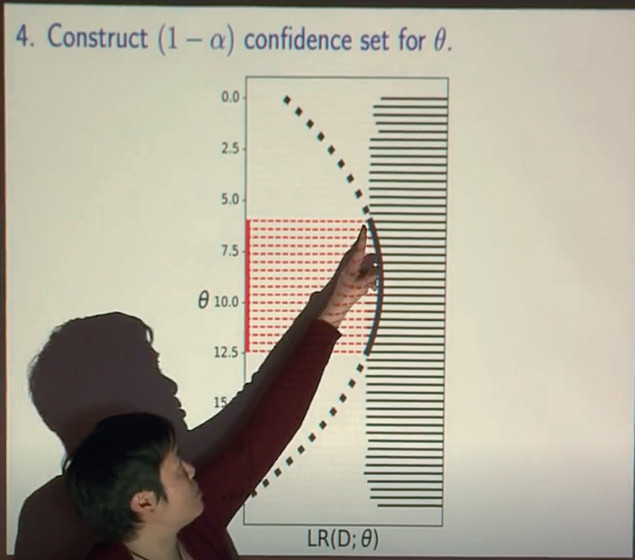
The PHYSTAT series of seminars and workshops provides a unique meeting ground for physicists and statisticians. The latest in-person meeting, after previously being postponed due to COVID, covered the field of systematic errors (sometimes known as nuisance parameters), which are becoming increasingly important in particle physics as larger datasets reduce statistical errors in many analysis channels. Taking place from 23 to 28 April at the Banff International Research Station (BIRS) in the Canadian Rockies, the workshop attracted 42 delegates working not only on the LHC experiments but also on neutrino physics, cosmic-ray detectors and astrophysics.
The organisers had assigned half of the time to discussions, and that time was used. Information flowed in both directions: physicists learned about the Wasserstein distance and statisticians learned about jet energy scales. The dialogue was constructive and positive – we have moved on from the “Frequentist versus Bayesian” days and now everyone is happy to use both – and the discussions continued during coffee, dinner and hikes up the nearby snow-covered mountains.
Our understanding of traditional problems continues to grow. The “signal plus background” problem always has new features to surprise us, unfolding continues to present challenges, and it seems we always have more to learn about simple concepts like errors and significance. There were also ideas that were new to many of us. Optimal transport and the Monge problem provide a range of tools whose use is only beginning to be appreciated, while neural networks and other machine-learning techniques can be used to help find anomalies and understand uncertainties. The similarities and differences between marginalisation and profiling require exploration, and we probably need to go beyond the asymptotic formulae more often than we do in practice.
Another “Banff challenge”, the third in a sequence, was set by Tom Junk of Fermilab. The first two had a big impact on the community and statistical practice. This time Tom provided simulated data for which contestants had to find the signal and background sizes, using samples with several systematic uncertainties – these uncertainties were unspecified, but dark hints were dropped. It’s an open competition and anyone can try for the glory of winning the challenge.
Collaborations were visibly forming during the latest PHYSTAT event, and results will be appearing in the next few months, not only in papers but in practical procedures and software that will be adopted and used in the front line of experimental research.
This and other PHYSTAT activities continue, with frequent seminars and several workshops (zoom, in-person and hybrid) in the planning stage.








